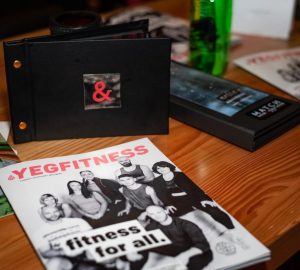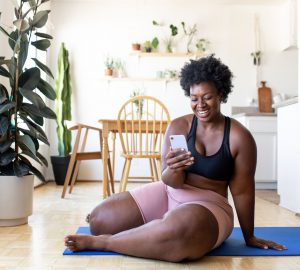Weighted vests are no longer just for elite athletes or military training—these sleek, adjustable tools are showing up everywhere in the fitness world, from CrossFit boxes to neighborhood running trails. But are they just another trend, or do they offer real benefits to your workout routine?
In this article, we’ll break down the benefits of using weighted vests for exercise, explore how to use them effectively, and help you choose the best option for your goals with a ranked list of “Good, Better, Best” weighted vest products available today.
What Is a Weighted Vest?
A weighted vest is exactly what it sounds like: a vest loaded with weight—usually in the form of removable steel or sand pouches—that you wear during exercise. It distributes added resistance across your upper body, simulating an increase in body weight to make your movements more challenging.
They come in many forms, from slim-fit versions ideal for running to heavy-duty tactical vests designed for strength training or bodyweight workouts like push-ups, pull-ups, and squats.
The Benefits of Using a Weighted Vest
1. Increased Intensity Without Extra Equipment
One of the most appealing aspects of weighted vests is how effortlessly they add intensity to basic workouts. Whether you’re walking, doing lunges, or hitting a HIIT session, adding a vest makes your body work harder, increasing both strength and cardiovascular effort—without needing a barbell, dumbbell, or cable machine.
This makes weighted vests ideal for at-home workouts, outdoor fitness routines, or those who want to train more efficiently with minimal equipment.
2. Boosts Cardiovascular and Muscular Endurance
Weighted vests increase muscle recruitment and cardiovascular effort during aerobic exercise. Studies show that wearing a vest during walking, running, or stair climbing elevates heart rate and VO₂ max, helping improve endurance over time.
For example, wearing a vest that’s 5–10% of your body weight during moderate cardio can result in better gains in leg strength, lung capacity, and core stability.
3. Enhances Functional Strength and Power
Using a weighted vest during bodyweight exercises mimics real-life strength demands—think carrying a child, hauling groceries, or hiking uphill with a backpack. It trains your body to handle additional loads without compromising balance or mobility.
Movements like push-ups, pull-ups, dips, and squats become significantly more challenging with a vest, accelerating strength gains and improving explosive power when used for exercises like jump squats or burpees.
4. Improves Bone Density and Joint Stability
Adding load to the skeletal system stimulates bone remodeling, which is crucial for maintaining bone density, especially as we age. Weighted vests can provide the load-bearing stress necessary for bone growth—without the impact of heavier weights or high-volume jumping.
They’re also useful for stabilizing joints, particularly the knees and hips, by strengthening the muscles around them during movement.
5. Supports Progressive Overload Without Changing Exercises
One of the core principles of fitness is progressive overload—the gradual increase of stress placed upon the body. Weighted vests allow you to stick with your favorite movements and still increase the challenge, making them perfect for plateaus in bodyweight routines.
Even adding 2–5 extra pounds can make a big difference over time, especially in calisthenics or running regimens.
How to Use a Weighted Vest Safely
While the benefits are clear, it’s important to use a weighted vest with good form and caution:
- Start light: Begin with 5–10% of your body weight to avoid injury or strain.
- Adjust weight gradually: Don’t jump from 10 to 40 pounds overnight—let your muscles and joints adapt.
- Balance is key: Ensure the weight is evenly distributed to avoid imbalances in posture or gait.
- Don’t wear it all day: It’s tempting, but wearing a vest too long can fatigue your spine and joints.
- Warm-up thoroughly: Always prepare your muscles and joints for the extra load.
3 Weighted Vests Ranked: Good, Better, Best
If you’re ready to invest in a weighted vest, here are three excellent options, ranked based on quality, comfort, and versatility:
✅ GOOD: Aduro Sport Weighted Vest
Best for: Beginners, walkers, light joggers
Weight range: 4–25 lbs
Price: ~$60 CAD
Why we like it:
The Aduro Sport Weighted Vest is comfortable, budget-friendly, and breathable, making it ideal for beginners or those new to resistance training. It’s neoprene material prevents chafing, and the front pocket is handy for keys or a phone.
Drawback: Fixed weight design (choose one weight at purchase), so not ideal for progressive overload.
✅✅ BETTER: Hyperwear Hyper Vest Pro
Best for: Runners, calisthenics enthusiasts
Weight range: Up to 42 lbs (modular)
Price: ~$300 CAD
Why we like it:
This vest is ultra-slim and made with moisture-wicking stretch fabric. It fits like compression gear, making it excellent for high-movement workouts like running or HIIT. It’s also adjustable and expandable, allowing for long-term progression.
Drawback: Pricier than entry-level models, and weights can be tricky to add at first.
✅✅✅ BEST: Rogue Plate Carrier Weighted Vest
Best for: CrossFit, military-style training, strength workouts
Weight range: 5–40+ lbs (modular plate system)
Price: ~$350 CAD + weight plates
Why we love it:
This is the gold standard of weighted vests. Durable, tactical-grade nylon construction, military-grade plate compatibility, and exceptional adjustability make it the go-to for serious athletes. It also holds up under the toughest workouts—think “Murph” level CrossFit challenges.
Drawback: Bulky for runners or smaller-framed individuals. It’s also a higher investment.
Is a Weighted Vest Right for You?
If you’re:
- Trying to increase the challenge of your walks, hikes, or runs
- Hitting a plateau with bodyweight exercises
- Wanting more resistance without loading up a barbell
- Focused on functional strength and endurance
…then yes—a weighted vest can be a game-changer in your fitness routine.
They’re portable, adaptable, and versatile. Whether you’re doing lunges in your living room or hiking steep trails, adding a weighted vest can provide the push your body needs to burn more calories, build more strength, and break through fitness plateaus.
Final Thoughts
Weighted vests are more than just a trendy Instagram prop—they’re a legitimate tool for building real-world strength, endurance, and resilience. With options to suit beginners and elite athletes alike, the key is to start smart and stay consistent.
So if you’re ready to level up your workout with minimal gear and maximum impact, strapping on a weighted vest might be your next best move.




